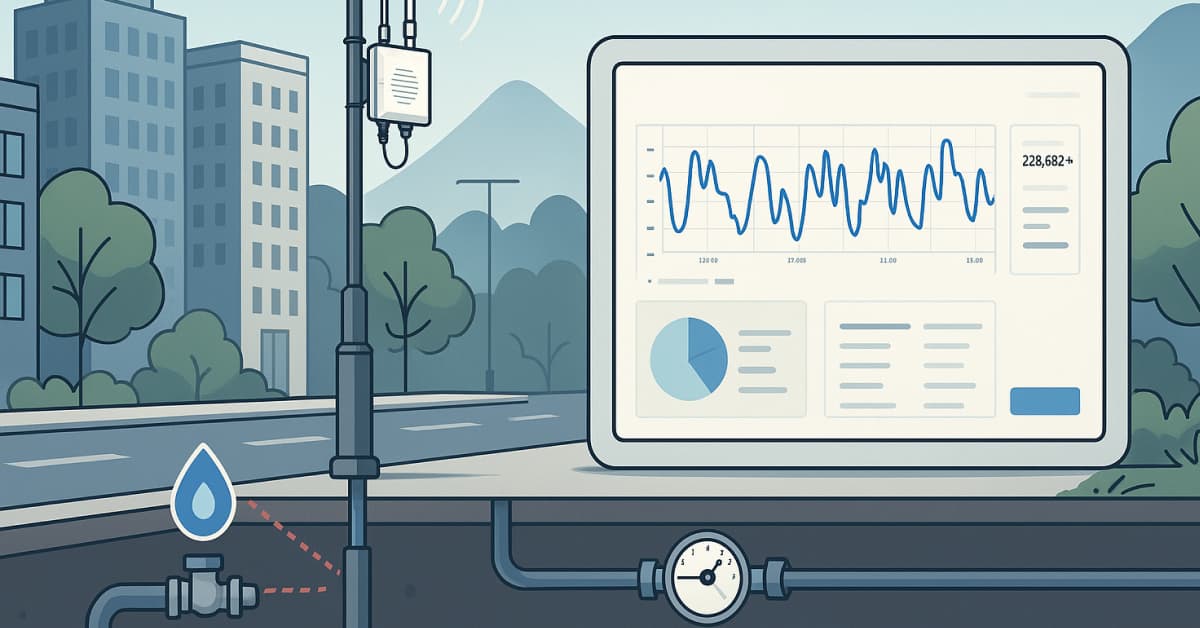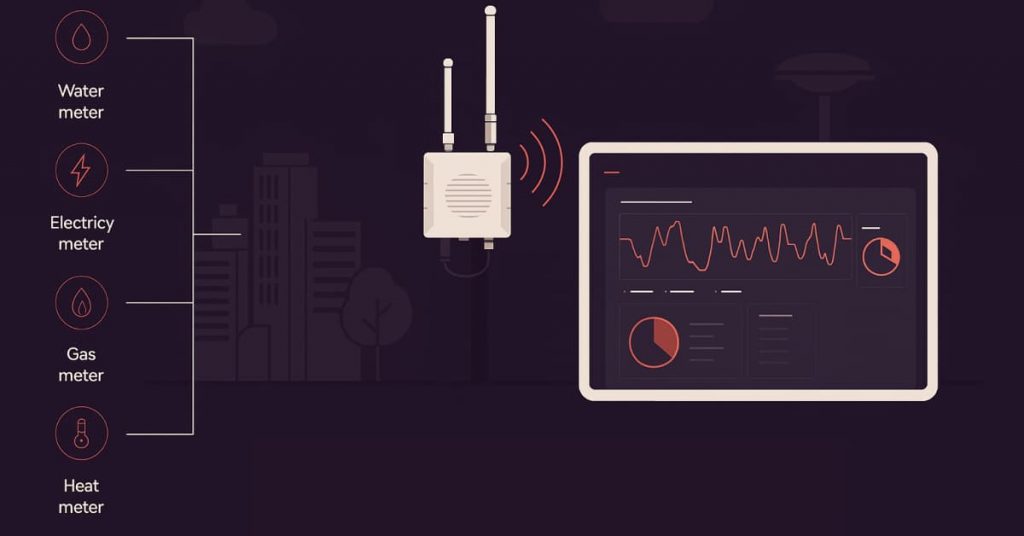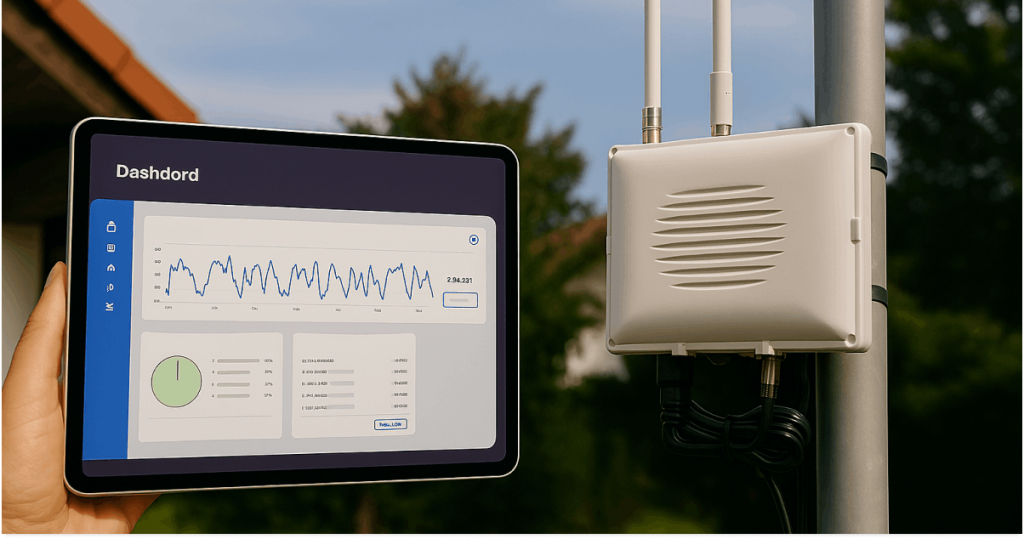
Smart cities represent the future of urban development, leveraging advanced technologies to enhance infrastructure, reduce waste, and improve the quality of life for residents. Among these technologies, IoT (Internet of Things) gateways play a pivotal role in managing utilities efficiently. From smart lighting and water systems to energy distribution, IoT gateways enable seamless communication and data-driven decision-making in urban utility management.
What Is the Role of IoT Gateways in Smart Cities?
IoT gateways serve as the central hub for collecting, transmitting, and analyzing data from connected devices across a city. These devices include sensors, meters, and other utility monitoring tools. The gateways act as intermediaries, facilitating communication between local devices and cloud-based platforms. This setup provides:
- Real-Time Data Monitoring: Continuously tracks utility usage and infrastructure performance.
- Centralized Control: Allows city managers to oversee multiple utilities from a single platform.
- Efficient Resource Allocation: Uses data insights to optimize resource distribution and minimize waste.

Benefits of IoT Gateways for Urban Utility Management
1. Enhanced Energy Efficiency
IoT gateways integrate seamlessly with smart lighting, HVAC systems, and energy grids to:
- Optimize energy consumption based on real-time demand.
- Reduce operational costs and carbon emissions.
2. Improved Water Management
Connected sensors and IoT gateways monitor water distribution systems to:
- Detect leaks and prevent wastage.
- Ensure equitable distribution in high-demand areas.
3. Better Waste Management
IoT-enabled waste collection systems use gateways to:
- Monitor bin levels and optimize collection routes.
- Reduce fuel usage and operational costs for municipal services.
4. Streamlined Traffic and Public Transport
IoT gateways enhance traffic management systems by:
- Collecting data on congestion and adjusting signals accordingly.
- Integrating with public transport systems to provide real-time updates to commuters.
How Smart Cities Benefit from IoT Utility Monitoring
1. Sustainability Goals
IoT gateways facilitate the integration of renewable energy sources, such as solar and wind, into city grids. They ensure:
- Efficient energy storage and distribution.
- Reduced reliance on fossil fuels.
2. Cost Savings
By optimizing utilities and infrastructure, IoT gateways reduce operational expenses for municipalities. Key areas of savings include:
- Lower energy bills through smart lighting systems.
- Reduced water loss in distribution networks.
3. Enhanced Quality of Life
IoT gateways improve urban living by:
- Ensuring consistent utility service.
- Providing real-time data to residents for informed decision-making.

Best IoT Gateways for Smart City Infrastructure
1. LoRaWAN Gateways
- Features: Long-range, low-power communication suitable for urban environments.
- Applications: Smart lighting, water systems, and public transport monitoring.
- Explore: Jooby LoRaWAN Solutions
2. Multi-Utility Gateways
- Features: Supports electricity, water, and gas monitoring.
- Applications: Comprehensive utility management for municipal services.
3. Edge Computing Gateways
- Features: Processes data locally to reduce latency and bandwidth usage.
- Applications: Real-time traffic and waste management systems.
How LoRaWAN Gateways Optimize City Energy Use
LoRaWAN technology is particularly effective for smart cities due to its ability to connect a vast number of devices over long distances. Key advantages include:
- Low Power Consumption: Ensures long battery life for connected sensors and devices.
- Scalability: Accommodates the growing needs of expanding urban infrastructure.
- Reliability: Provides secure and interference-free data transmission, even in dense environments.
Top IoT Solutions for Sustainable City Infrastructure
1. Smart Lighting Systems
- Automatically adjust brightness based on ambient conditions and usage patterns.
- Reduce energy consumption and operational costs.
2. Water Distribution Monitoring
- Track flow rates and detect leaks in real time.
- Ensure efficient water usage across the city.
3. Public Utility Dashboards
- Provide city managers and residents with insights into utility performance.
- Enhance transparency and accountability in urban services.
Why Choose IoT Gateways for Smart Cities?
IoT gateways are indispensable for building sustainable, efficient, and connected cities. They provide the tools needed to:
- Monitor and optimize utilities in real time.
- Reduce operational costs and environmental impact.
- Enhance the overall quality of life for residents.
Where to Buy IoT Devices for Smart City Infrastructure
Explore the latest IoT gateways and smart city solutions at:
Final Thoughts
IoT gateways are the backbone of smart city infrastructure, enabling efficient utility management and sustainable growth. By integrating these advanced technologies, municipalities can create more livable and environmentally friendly urban environments.Take the first step toward a smarter city with Jooby IoT solutions, and revolutionize your approach to urban utility management.
